What to plant after beets next year: what mistakes to avoid in crop rotation so as not to harm the crop
The annual planting of vegetable crops in the same place impoverishes the soil, which entails a decrease in yield at times. In addition to the autumn digging of the soil with the introduction of the correct fertilizers, the observance of the rules of crop rotation contributes to the preservation of the fertility of the land. Competent crop rotation will protect against many diseases and pest damage to the crop.
The content of the article
Features of crop rotation of beets
Beetroot is an easy-care crop that is grown everywhere and in a variety of conditions... However, there are a number of features that must be taken into account when cultivating a root crop in order to get a rich and high-quality harvest.
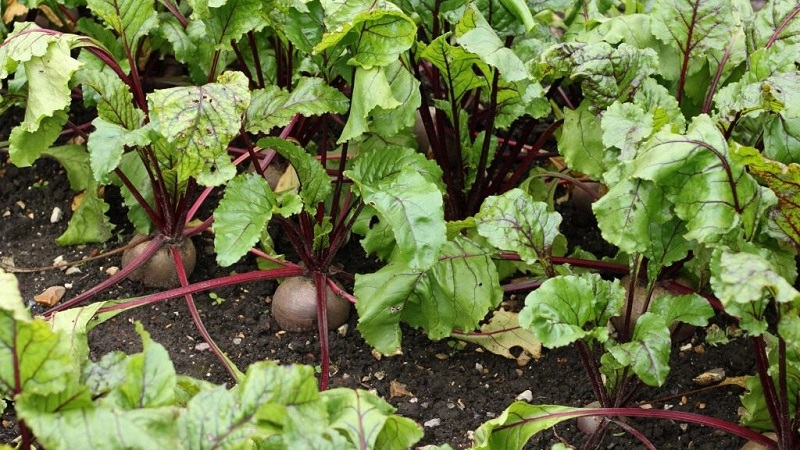
Basic requirements of cultivation agrotechnology:
- The plot for the beds for root crops is located in a sunny place. It depends on how bright, sweet and large the vegetable grows.
- The level of acidity of the soil is no less important for beets - the vegetable develops poorly in acidic soil, its pulp turns black. With an excess of lime, the plant weakens, it is affected by scab. For the full growth and development of the root crop, the soil pH should be 6.5-7.
- Most of all, beets are demanding on moisture during the period of rooting of seedlings or germination of seeds (depending on the method of planting). During the development of the root crop, moderate watering is required. Closer to harvesting, watering is reduced - excess moisture will lead to rotting of fruits in the ground.
- The ideal soil for beets is loam with humus - a soil of medium density. On heavy clay soil, it will be difficult for the root crop to gain weight, and in excessively light sandy loam soils, the vegetable will not receive the required amount of nutrients, since they will constantly be washed out into deeper layers by rain and watering.
- For the full development of the root crop, an area of at least 9x9 cm per unit is needed.
It can be useful:
Beets grow poorly - how to feed
What to plant after beets next year
The main principle of competent crop rotation on the site is the correct calculation of crop change. Vegetables with similar diseases and nutrient requirements should not be alternated. Beets will be an ideal precursor for legumes (peas, beans), since they restore the balance of trace elements in the soil.
Also grows well after this root crop:
- tomatoes;
- potatoes;
- eggplant;
- pumpkin;
- cucumbers.
Reference. Can strawberries be planted after beets? Yes, you can. But keep in mind that beets are a neutral predecessor. Before planting strawberry beds, former beet beds need to be well fertilized.
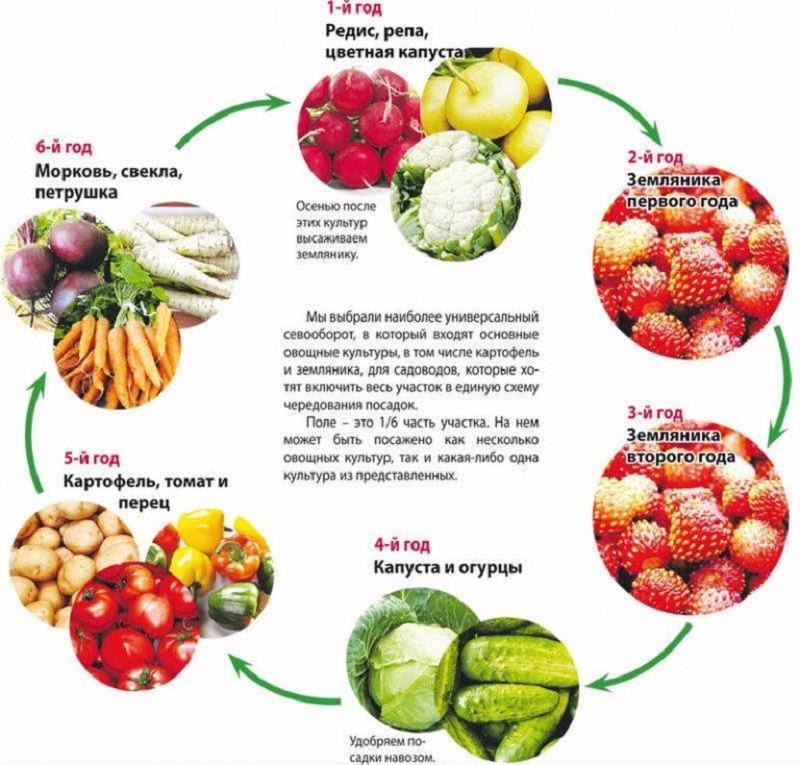
What is better not to plant
It is not recommended to plant carrots after beets - both root crops need similar nutrition. Carrots will lack nutrients, since before it all the trace elements necessary for growth from the soil will be selected by its predecessor.
This rule can be neglected in special cases.when there is no other suitable place in the garden. To harvest a good harvest of carrots from the garden on which the beets grew in the previous year, the soil is enriched with compost in the fall.
Then plant the beets
According to the rules of crop rotation, beets are planted only after those crops that did not take away from the soil the nutrients required for the full development of the root crop.
The best precursors for beets will be vegetables from the nightshade family.:
- pepper;
- eggplant;
- potatoes;
- tomatoes.
The beds after the nightshade are thoroughly cleaned, the soil is prepared for the spring planting of beets, fertilizing it with compost and humus.
On a note... Onions will be the ideal precursor for all crops - the essential oils contained in it repel most types of pests of garden crops.
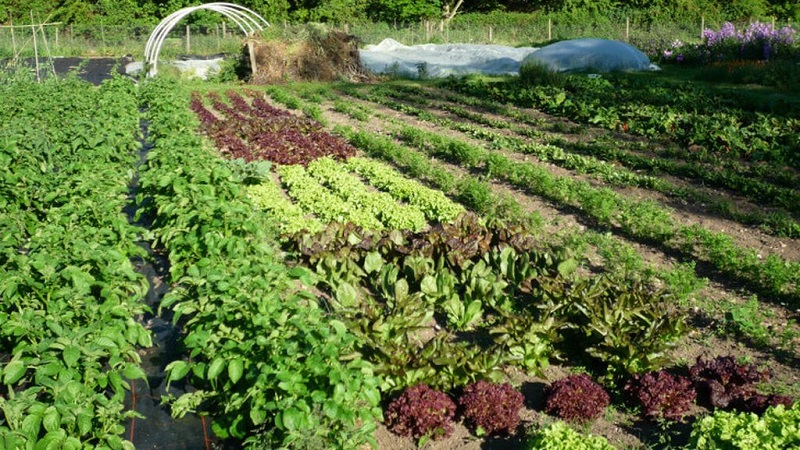
You can alternate on the same bed planting root crops with cucumbers, squash, zucchini: All these vegetables are good precursors for beets, as their root system is in the upper layers of the soil and does not affect the nutrients it needs.
If it is possible to leave a piece of land fallow, clover can be planted on it. The plant will enrich the soil with useful trace elements. Beets planted the year after clover will grow large and sweet.
Read also:
Is it possible to pick off the leaves of beets during growth
Deprecated predecessors
There are some plants after which beets cannot be planted, as this can lead to depletion of the soil and the development of soil infections.
Unwanted root crop precursors:
- rape;
- spinach;
- chard;
- carrot;
- cabbage.
The listed vegetables have similar requirements for growing conditions. and susceptibility to similar pests, so planting them in one place each year depletes the soil.
Next to what to plant beets
The most suitable vegetable for simultaneous planting in the neighborhood is kohlrabi... This cabbage can be planted on the same bed with beets as follows: kohlrabi in the center, beets at the edges. Vegetables are good for each other.
Kohlrabi is an early ripening crop, it is harvested during the summer, and the beets are given room to grow freely.
Also good neighborhood will come out with:
- lettuce;
- parsley;
- radish;
- asparagus;
- broccoli;
- Brussels sprouts.
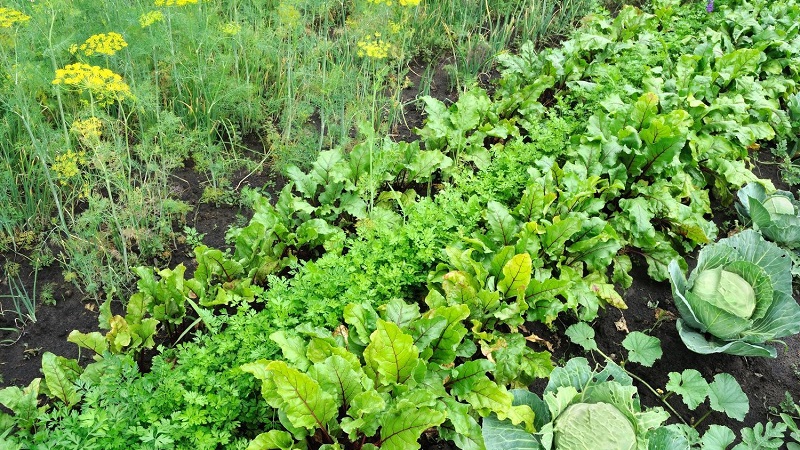
Neighbors such as mint, oregano, marigolds will successfully drive away most types of pests... If you plant marigolds next to vegetables, their roots will rid the beds of nematode larvae. Beets themselves will be an excellent neighbor for strawberries and grapes.
As for the neighborhood of beets with carrots on the same bed, the opinions of gardeners differ.... On the one hand, both crops require similar nutrients, on the other hand, carrots will lack light in the shade of beet tops. There is also the opposite opinion that such a neighborhood has a healing effect for carrots.
Bad neighbors for beets
Beetroot is an unpretentious crop, but it also has unwanted neighbors... So, a wonderful green manure mustard, which was planted next to or before sowing beets, will oppress the root crop.
Do not plant peppers next to beets - with such a neighborhood, although he does not interfere, he will suffer himself.
Another neighbor harmful to beets is corn... Having risen, she will shade her neighbor, which requires a lot of sun to successfully ripen.
Reference. Table beet is not combined with its related crops: sugar beet and chard (herbaceous subspecies). If rye is sown next to beet beds, both crops will harm each other.
Possible errors and what they are fraught with
Most often, inexperienced gardeners, in an effort to improve the harvest, either apply too much fertilizer, or "feed" the land to everyone, believing that "you cannot spoil the porridge with oil." Some mistakes lead to "burnout" of seedlings or getting nitrate-poisoned root vegetables.
Important! In no case should beets and other crops be planted in beds with fresh manure. The soil for spring planting is prepared in the fall. Mullein is considered the best organic fertilizer for all vegetable crops. For autumn digging, experienced gardeners use a mixture of cow dung with bedding material (straw). Such fertilizer is applied in a ratio of 3-4 kg per 1 sq. m.
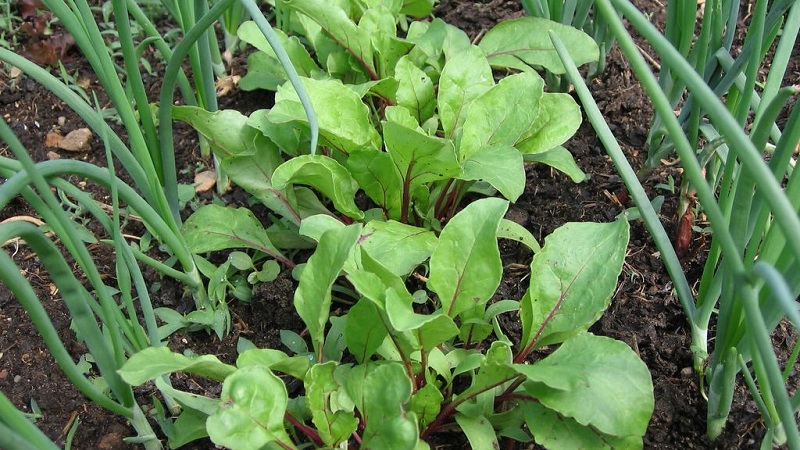
Tips & Tricks
Experienced gardeners recommend strictly following the rules of crop rotation... This is the only way to get the most out of your summer cottage and get an excellent harvest every year. Ideally, a culture can be returned to its original place only after five years. For some vegetables, this period is reduced to 3-4 years.
It is clear that for several years it will be difficult to remember on which garden this or that vegetable grew, so there is a planting diary, in which you additionally note when and with what certain beds were fertilized.
Many summer residents grow a little of everything on their plots. In this case often two or more crops are planted on one bed at once... It is important to follow the rules of mutually beneficial vegetable neighborhood. In order not to forget next year, in which part of the garden this or that culture grew, draw a plan of the site in your diary and sign each part of it.
A few words about fertilization
The soil is prepared in advance apply the necessary fertilizers to it in accordance with the requirements of each crop... Also, when applying fertilizers, the deadlines are observed.
For example, plants need nitrogen fertilization during the period of vegetative mass gain... The introduction of nitrogen during the setting of the buds will provoke an abundant growth of the green mass to the detriment of the fruit ovary. An excess of nitrogen-containing dressings can provoke the development of fungal diseases.
Potash and phosphorus fertilizing introduced during the formation of root crops in beets, carrots and potatoes, as well as fruit ovaries in tomatoes, peppers, eggplants, cucumbers. Organic matter is introduced into the soil in the fall, since this fertilizer takes time to decay.
To protect the crop from pests most often, chemicals are used, while it is important to observe the timing and dosage. The first treatment is carried out 10-15 days after planting seedlings in the ground. The last spraying is carried out no later than two weeks before harvest.
Conclusion
It is important for every gardener to know which crop can be planted after the beets and which is not recommended. The quality and quantity of the crop directly depends on compliance with the rules of crop rotation.
The favorable neighborhood of vegetable crops saves each of them from many diseases and pests. At the same time, the wrong selection of neighbors, predecessors and followers can nullify all the efforts of the gardener. Compliance with the rules of soil preparation, plant feeding and crop rotation is the key to a plentiful and tasty harvest.